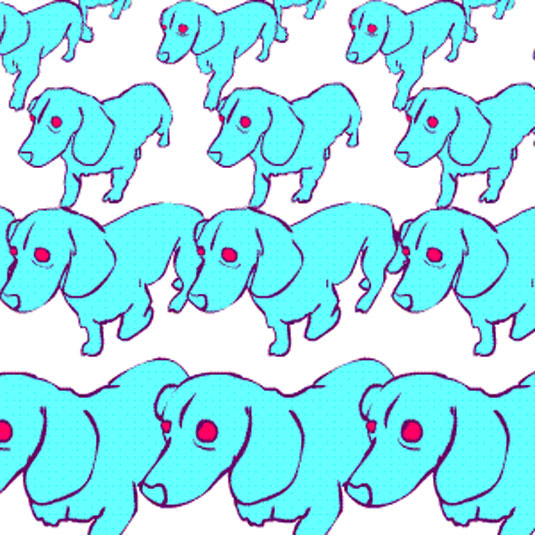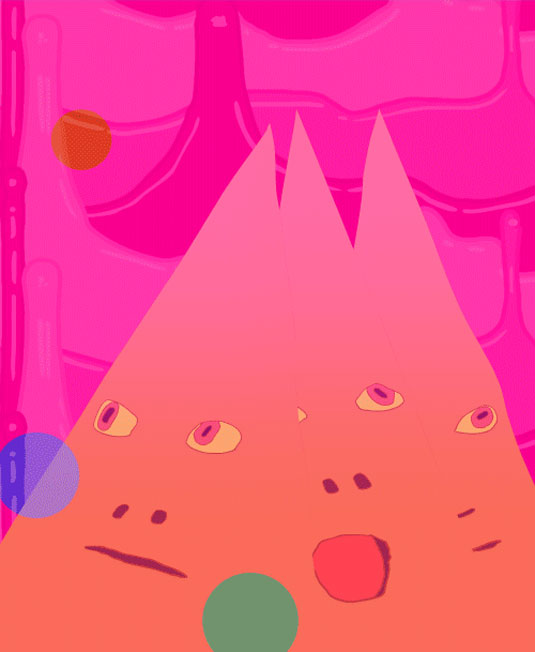Theory of Change for New Program Design
How the cinemagraph is changing modern design
At Kanoti, we're currently working on a project involving animated GIFs, or more precisely, cinemagraphs (the younger, arguably more tasteful cousin of the GIF).
The project, which is intended to offer a brand new digital interactive storytelling experience, has got us thinking about the ways in which we consume stories and about how technologies can impact on how a story is told and received.

Changing times
Unless you've been hiding under a rock for the past few decades, you'll know that GIFs have come a very long way since they were first introduced in the late 80s.
Once an obsolete image format, in recent years they've been widely adopted for creating short, looping animations, mainly to communicate simple, immediate, humorous content.

Recent news that it's now possible to embed GIFs in Facebook messages using Giphy was, unsurprisingly, met with elation. Over time, GIFs have even come to be used as a kind of shorthand for emotions (see the ocean of Reaction GIFs if you doubt this) and as such could be considered both an art form in themselves (particularly in the guise of the fashion-friendly cinemagraph) and a new method of communication.
Serious application
We certainly feel there is something special about the animated GIF, and our current work, which was commissioned by the BBC through the Connected Studio for Comedy event, involves using them within a scrolling HTML5 web comic to help bring a fictional (comedy) story to life in unexpected ways. But it hasn't escaped our attention that, as the folks at the Oxford American Dictionary observed last year, "The GIF has evolved from a medium for pop-cultural memes into a tool with serious application including research and journalism."
The humble GIF has even been used (controversially) to document disasters such as the recent train wreck in Spain. Writing for the New Yorker earlier this year, Matt Buchanan observed that in this way the disasters are reduced to hypnotic, endless replays of the moments at the hearts of the disasters - and that "it feels jarring to see a GIF earnestly convey something of weight and consequence - of tragedy".
Snackable content
Such a reaction signals the extent to which we equate short, easily digestible content with the light and trivial, and the lengthy with the serious. We're told that our attention spans are ever-shortening and that "marketers, brands and media outlets have to work harder and faster to grab our attention", that it's all about "snackable content" these days - presumably about as intellectually nourishing as fast food.
We have Twitter on the one hand, long-form blogging on the other. And somewhere in the middle, things like the Guardian's series Twitter fiction, in which "top writers try their hand at writing a story with only Twitter's 140-character limit to play with."
This attempt to infuse meaning in brevity may feel like a very modern response to how technology seems to be requiring us to distil our thoughts into ever-shorter and more frequent soundbytes. Yet the super-short story is no new phenomenon - consider Frederic Brown's 1948 Knock, a "sweet little horror story that is only two sentences long": The last man on Earth sat alone in a room. There was a knock on the door…

Few things are immune to being compressed down to their most immediate and central elements, it seems. The makers of the Movies In a Minute videos on YouTube have helpfully condensed your favourite films to their most essential moments so they only take a minute to enjoy – why would you bother with the filler?
Similarly, our creative director at Kanoti, John Davison, recently met someone who claimed, quite alarmingly, to watch box sets at double speed in order to get through them in half the time.
Perhaps this kind of extreme editing is inevitable in a culture where people who like to be in control of when and how we consume content are given the tools to do so.
Endless looping
Brevity is not the only feature of the animated GIF, however – its magic lies also in the fact that it loops endlessly. In his article Trapped In The Loop , Rex Sorgatz suggests that "The Loop has become not only a dominant media form, but also a new way to perceive information… [it] has become the preeminent narrative device of our time."
And The Loop does feel ubiquitous to some extent – perhaps there is something universally satisfying about a well-composed loop? Perhaps the loop could even be seen as a fundamental shared experience – our lives are filled with loops, some of which we experience every minute, while others take a lifetime to be fulfilled.

Subverting the loop
We've also found it insightful to look to the world of interactive, game-based media for evidence of short-form content and further signs of the all-pervading loop.
For example, the experimental art game Every Day the Same Dream exploits our universal experience of the loop beautifully. You play as an ordinary man going about an ordinary working day over and over again, Groundhog Day-style – except if you pay attention, you can find ways to sidestep the loop and escape the monotony.
Similarly, the minimalist game One Chance subverts our notion of the loop. In the game, you have six near-identical days to make near-identical choices which may affect the survival of humanity. But this time the loop is definitely finite – not only are your days numbered, but you can only play it through once (on any one computer [unless you do some clever technical fiddling!]).
The story which we are currently bringing to life also relies heavily on the notion of loops, with characters trapped in situations where they are compelled to carry out the same roles ad nauseum – clearly an experience familiar to many of us.

Storytelling paradox
In our work using this medium so far, we've come to wonder if the ultra-short, looping animation poses a bit of a paradox to the world of storytelling.
Animated GIFs can give us the illusion of being fully immersed in one short moment which we can experience again and again infinitely. However, many of us have the sneaking suspicion that digital culture has reduced our ability to focus on just one thing, and the appeal of games like Every Day the Same Dream relies on our shared desire to escape the monotony of endless loops.
Yet, perhaps Matt Buchanan does have a point when he suggests that "There is no easy way to stop the loops – our desire to make them or to watch them. They just keep going." The way we're using animated GIFs is within the context of a longer, linear story, recognising that if used in isolation, as Rex Sorgatz has suggested, "The Loop has a tenuous relationship to storytelling". While most stories have a beginning, a middle and an end, the loop is "all-at-once" – though some might disagree.
Audience appreciation
Our hope with the aforementioned work in progress is that our choice of technology will ultimately enhance the audience's appreciation of the content, rather than simply being included for its own sake. Our task is to give the BBC Two audience an experience which makes them feel strongly connected to the story in a different way than they are used to with television or books, and we hope that the unique nature of the animated GIF will be one way to help us achieve this.
We very much look forward to sharing the outcome with you soon, but if you are interested in learning more, BBC Comedy Producer Jon Aird has been blogging about the project and his post is well worth a read.
Words: Emilia McKenzie
Emilia McKenzie is creative strategist at Kanoti. An award-winning digital creative agency specialising in story-driven, multi-platform digital experiences for clients including MTV, BBC, Nike, Tate, Channel 4 Disney, Nickelodeon, and Médecins Sans Frontières. Follow them on Twitter at @kanoti.
Liked this? Read these!
- Create an awesome cinemagraph in Photoshop
- Stunning cinemagraphs from classic movies
- Clever claymation celebrates 25 years of animated GIFs
Have you seen a great use of cinemagraphs? Tell us about it in the comments below!
Related articles
Theory of Change for New Program Design
Source: https://www.creativebloq.com/graphic-design/how-cinemagraph-changing-modern-design-11135154
0 Response to "Theory of Change for New Program Design"
Post a Comment